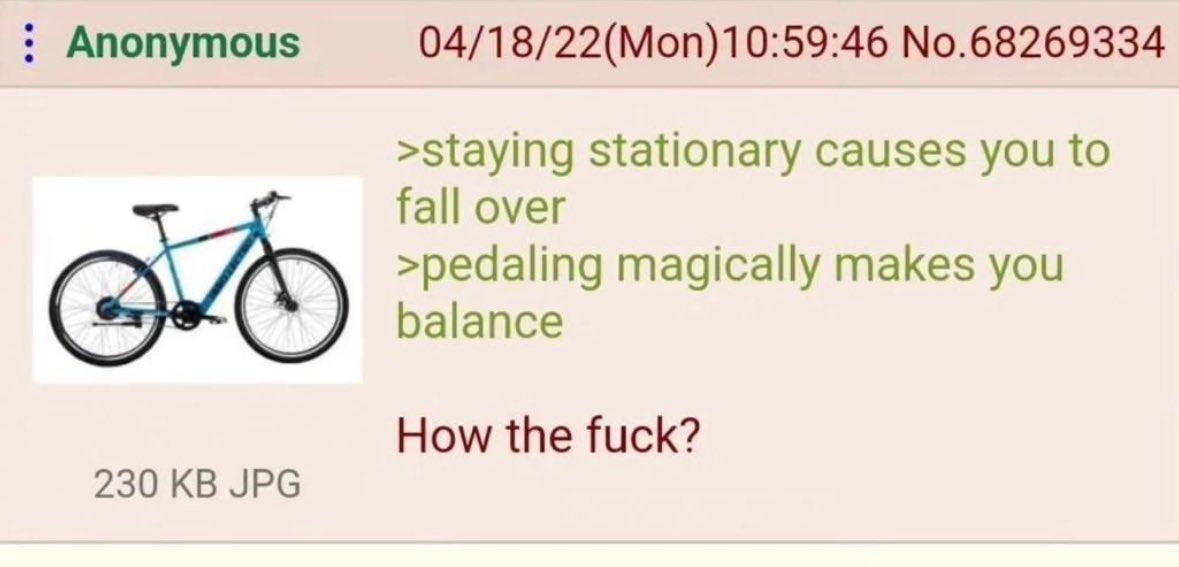this post was submitted on 17 Sep 2024
691 points (98.2% liked)
Greentext
6704 readers
1044 users here now
This is a place to share greentexts and witness the confounding life of Anon. If you're new to the Greentext community, think of it as a sort of zoo with Anon as the main attraction.
Be warned:
- Anon is often crazy.
- Anon is often depressed.
- Anon frequently shares thoughts that are immature, offensive, or incomprehensible.
If you find yourself getting angry (or god forbid, agreeing) with something Anon has said, you might be doing it wrong.
founded 2 years ago
MODERATORS
you are viewing a single comment's thread
view the rest of the comments
view the rest of the comments

Same principle as a gyroscope: a turning wheel will tend to stay perpendicular or parallel to the direction of the gravity vector because if it starts tilting away from such orientation there's a force that pushes it back.
Also works better with bigger wheels (if I remember it correctly the effect is related to spinning momentum).
I was pretty surprised when learning Physics and they show us how to derive the formula for that (which I totally forgot since that was over 3 decades ago).
Edit: Actually the gyroscopic effetc is just a part of it. See this article
Actually, it's the bike's geometry rather than a gyroscopic effect. Try rolling a bike backwards rather than forward - it'll topple quickly
Freestyle BMX riders go in reverse all the time and they don't fall over.
A BMX bike without a rider will roll along happily. We called it "ghost riding" when I was a kid.